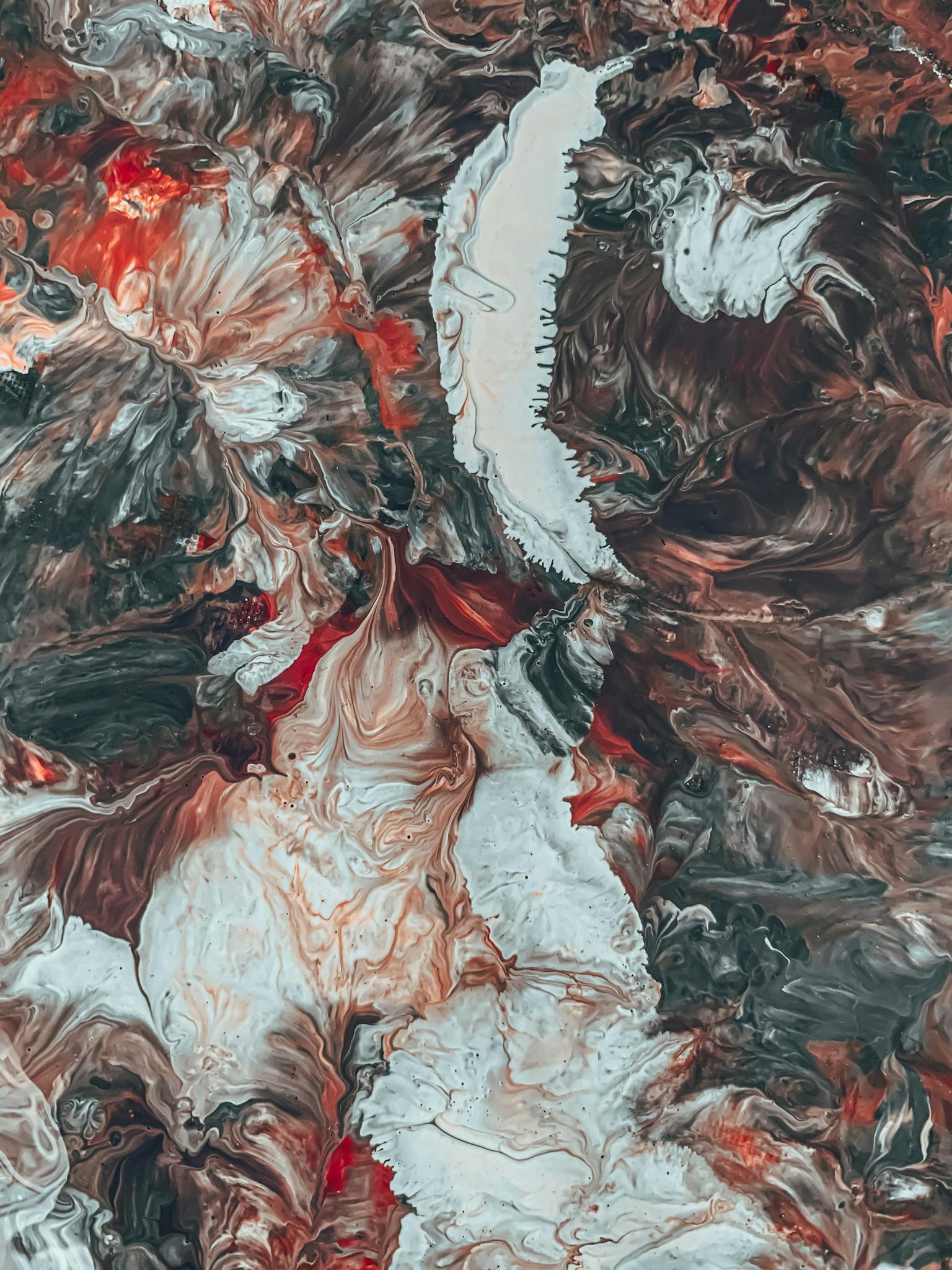Greek Gods and Mythology
Step into an eerily quiet space on a typically busy Saturday and find yourself in a small chamber filled with gold leaves scattered on the pristine white floor. The room exudes darkness, reminiscent of the interior of a cave, with a thick cloth hanging on the opposite wall resembling a gigantic flag adorned with otherworldly script.
As you approach the draped cloth, you’re greeted by an achingly familiar image—the winged Nike gracefully descending, about to touch the slumbering body of a woman. This captivating scene hints at the enduring allure of Greek mythology, a realm filled with gods, goddesses, heroes, and monsters that have captivated audiences for centuries.
The tales of Greek mythology have transcended time, weaving themselves into the fabric of art, literature, and culture throughout history. Today, creative minds continue to draw inspiration from these ancient stories, infusing their work with universal themes and archetypes that resonate deeply with audiences.
By uncovering the bravery and heroism of iconic figures like Atalanta, artists can infuse their work with a sense of heroism that bridges the gap between past legends and present-day artistic endeavours.
Heroes
Worship
The ancient Greeks worshipped their heroes much like their gods. The Greek countryside was filled with hero shrines, both for well-known heroes like Odysseus and more obscure ones. Unlike modern heroes, Greek heroes were not necessarily moral; what mattered was their strength and achievements. They were remembered for their assistance or feared for their potential wrath.
Heroes
Greek mythology features numerous heroes who demonstrated bravery and valour. Prominent examples include Heracles, who performed 12 impossible labours, Pandora, the first woman, Narcissus, who fell in love with his own reflection, and Daedalus, the genius inventor.
Monsters and hybrids
Monsters and hybrids also play significant roles in these tales, including Pegasus, Centaurs, Sphinx, Harpies, and Cyclopes.
Insights into the heroes and heroines of Greek mythology can be drawn from figures like Aiakos and the Aiakids. This group includes Peleus, Achilles, and Ajax, crucial characters in the epics of old.
Charities
The Charities, personifications of grace and charm, embody virtues that can be incorporated into artistic creations. By exploring themes of beauty and elegance represented by these notable women, artists can infuse their work with the essence of grace.
Themes
The themes of heroism, sacrifice, and perseverance seen in the tales of Greek heroes like Achilles and Heracles can add depth and meaning to contemporary narratives. Artists throughout history have utilised Greek myths as a source of inspiration, exploring lesser-known heroes and female warriors to offer new perspectives.
Inspiration
Designers can create awesome design creations by drawing inspiration from iconic figures of Greek mythology. From Hercules to Achilles, these legendary heroes continue to captivate audiences with their bravery and valour, inspiring countless works of art and literature over the centuries.
Other Deities
Many universities capitalised on the allure of Greek mythology by naming houses and offices around Greek Gods. However, with just 12 primary deities to choose from, many lesser-known gods are left in obscurity.
Before the Olympians, the Titans and Titanesses, offspring of Gaia and Uranus, reigned over various aspects of the world, like the oceans and the sky. These pre-Olympian gods, powerful entities associated with fundamental natural forces such as the sun and the sea, held significant roles in Greek mythology.
While figures like Zeus and Athena dominate discussions, exploring the lesser-known gods and goddesses can provide fresh inspiration and insights. Geras, the god of old age, embodies the challenges of growing old, while Chaos, the primordial deity, represents the formless entity from which creation sprung. Rhea, an ancient earth goddess overshadowed by her family, also plays a vital role in certain regions of ancient Greece.
The dark and eerie chthonic deities, associated with the underworld and the earth, present artists with a wealth of inspiration for delving into human psychology. Figures embodying leadership and authority, like Kings, offer themes ripe for modern interpretations. Beyond the popular gods like Zeus, lesser-known deities can shed light on new perspectives for creative endeavours.
Drawing inspiration from the primal forces embodied by the primordial deities like Chaos and Gaia can infuse creations with raw energy. Similarly, the Titans and sea deities like Poseidon can evoke power and awe in artistic works. Deified mortals such as Heracles symbolise strength and heroism, providing a sense of resilience to modern creative pursuits.
Exploring health deities like Asclepius and Hygieia can inspire works centred around healing and well-being, bridging tradition with innovation. Sea deities such as Poseidon offer mysteries of the ocean, inviting artists to tap into primal forces of nature.
By bringing to light overlooked gods and goddesses, creative individuals can unearth untapped creative potential for inspiration. The awe-inspiring Gigantes and legendary Amazons can infuse works with grandeur and strength. The dark themes of eternal punishment in Tartarus offer a glimpse into the consequences of divine wrath, providing rich material for exploring powerful narratives.
Rustic Deities
The reverence for agricultural deities in ancient Greece was profound, shaping the culture and beliefs of the era. Drawing inspiration from these rustic divinities allows modern artists to access a wellspring of creativity rooted in the natural world.
Engaging with the natural world through artistic expression enables creators to connect with the essence of rural divinities and their domains.
Muses
In ancient Greek mythology, the Muses were revered as goddesses of artistic inspiration. They were daughters of Zeus and Mnemosyne and believed to be the source of creative stimulation for various artistic endeavours such as writing poetry, creating music, and crafting masterpieces. Each of the nine Muses was associated with a specific domain, guiding and fostering creativity in those areas. For instance, Calliope presided over epic poetry, while Clio was associated with history.
Artists and writers often invoked these divine beings to help them harness their creative abilities. By calling upon the Muses, they sought to infuse their work with divine inspiration. The Muses were commonly depicted in ancient art and architecture, each adorned with unique attributes representing their individual artistic domains.
- Calliope: Epic poetry
- Clio: History
- Erato: Love poetry and lyrics
- Euterpe: Music
- Melpomene: Tragedy
- Polyhymnia: Sacred poetry
- Terpsichore: Dance
- Thalia: Comedy and pastoral poetry
- Urania: Astronomy
Charities
The Charities, also known as the Graces, were minor goddesses from ancient Greek mythology who presided over charm, beauty, creativity, and fertility. In Roman mythology, they were known as the Gratia (the Graces). The three main Charities typically acknowledged were Aglaea, Euphrosyne, and Thalia. Their domain celebrated exuberance, splendour, and pure joy. Their gifts were benevolent, bringing cheer, grace and charm to settings.
Personified Concepts
The Greek myths are filled with personifications of abstract ideas as deities such as Eros (Love), Nemesis (Revenge), Themis (Justice), Tyche (Luck), Eirene (Peace), Homonoia (Harmony), and Demokratia (Democracy). These conceptual entities blur the lines between human-like figures and powerful forces, enhancing the complexity of ancient Greek stories.
Storytellers can craft engaging narratives that resonate with universal human experiences. These personifications exemplify how ancient myths provide profound symbols that can infuse creative projects with elegance and depth.
Seers/oracles
The seer (mantis), an expert in the art of divination, operated in ancient Greek society through a combination of charismatic inspiration and diverse skills. These included examining the livers of sacrificed animals and spirit possession. Unlike fringe mediums and palm readers of modern society, many seers were highly paid, respected, educated members of the elite. They played an essential role in daily life, political decisions, and military campaigns. Armies would never venture anywhere without one.
The Horae, goddesses of the seasons and natural order, guided the passage of time and change in Greek mythology. Drawing from their wisdom and symbolism can lead to a deeper appreciation of creativity and innovation’s cyclical nature in modern artistic endeavours.



